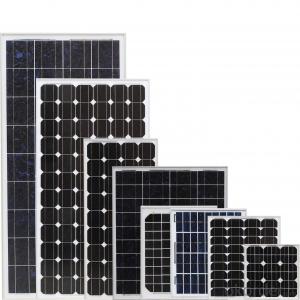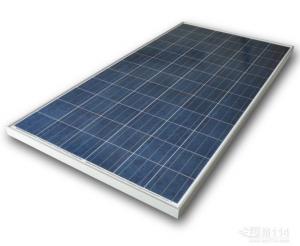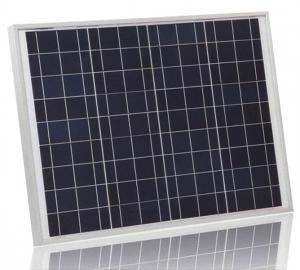Desert Solar Panels - Mono Solar Cell/PV Module with Good Price Favorites Compare 180W
- Loading Port:
- China Main Port
- Payment Terms:
- TT or LC
- Min Order Qty:
- -
- Supply Capability:
- 10000000 watt/month
OKorder Service Pledge
OKorder Financial Service
You Might Also Like
1.Structure of Solar Module Description
Solar modules, which are widely used in ground mounted utility-scale PV plants, large-scale and small civil and commercial power generating system such as BIPV combined to the grid, roof-mounted PV power system, rural electrification, communications, emergency auxiliary power. NEXTECK, as one of the solar module supplier, has the capability to offer a wide range of advanced, high performance solar modules with integrated high efficiency. Energy efficient and cost effective Mono crystalline and Polycrystalline, amorphous silicon and CIGS thin film solar cells are available. We have the right products for different applications.
2.Main Features of the Solar Module
Quick Details
| Place of Origin: | Zhejiang China (Mainland) | Brand Name: | CNBM | Model Number: | PLM-180P-60 |
| Material: | Monocrystalline Silicon | Size: | 1650*992*40mm | Number of Cells: | 60 |
| Max. Power: | 180 | Color: | Silver,Black | Quality Certifications: | PID Free, Salt Mist,Fire Test and Ammonia Gas certifications |
| International Certifications: | TUV,MCS,UL,CEC and J-pec | OME/ODM: | Yes | Solar Cells Efficiency: | 17.2% |
| Solar Panels Efficiency: | 15.3% |
Packaging & Delivery
| Packaging Detail: | Carton boxes with pallets and air bags |
| Delivery Detail: | within 15 days after arrival of the 20% TT in advance |
3.Solar Module Images
4.Solar Module Specification
Specifications
-PID Free,Salt Mist, andAmmonia gas Certifications
-Higher Efficiecny Solar Cells;
-More cost effective;
-25 years guarantee.
Product Description
High efficiency mono crystalline solar panel PLM-240P-60 series
Anti-reflective coating: AR used reduce the reflectivity enhance transmittance.
Tempered Glass: Low Iron and AR coating glass increase the power output and mechanical strength of solar module. Mechanical load ≥2400Pa , transmittance ≥91.6%
EVA: Transmittance ≥91% , Adhesive Capacity >85%
Cell: 17.9% of high efficiency solar cells to sure 15.3% module efficiency
Back sheet: Using higher quality back sheet to prevent destroying and water , it’s reflectivity ≥87%, peeling strength ≥ 40N/cm.
Aluminum Frame: Anodized aluminum alloy to effectively improve the corrosion resistance and strengt.
Certification:
![]()
Maxium system voltage 1000VDC
STC:Irradiance 1000W/m², Temperature 25°c,AM=1.5
Mechanical Characteristics:
| Cells size(mm) | 156X156 |
| Modules size(mm) | 1650X992X46 |
| No. of cells | 60(6X10) |
| Weight(KG) | 19.6 |
| No.of mounting holes | 8 |
| No.of waterspout | 16 |
Temperature Coefficient:
| NOCT | 45°C±2°C |
| Temperature coefficient of Isc | 0.05%/°C |
| Temperature coefficient of Voc | -0.33%/°C |
| Temperature coefficient of Pmax | -0.44%/°C |
| Power Tolerance | 0/+3% |
| Working temperature | -40°C to 85°C |
Qualification Test Parameters:
| Temperature cycling range | -40℃~85℃ |
| Humidity freeze, damp heat | 85%RH |
| Static load front and back (e.g. wind) | 2400 pa (50psf) |
| Front loading (e.g. snow) | 5400 pa (113psf) |
| Hailstone impact | 25mm ( 1 inch) at 23 m/s (52mph) |
Packaging & Shipping
Package Information:
| Type | Frame | PCS/Pallet | Pallets/Container | PCS/Container |
| 40HQ 1650X992 156P 60cells | 40/46 | 23 | 28 | 784/700 |
Our Services
Product Wattanty:
10 years for the workmanship
12 years power output no less than 90%
25 years power output no less than 80%
5.FAQ of Solar Module
1. Q: Do you have your own factory?
A: Yes, we have. Our factory located in Jiangyin city, jiangsu province.
2. Q: How can I visit your factory?
A: Before you take off from your country, please let us know. We will show you the way,or arrange time to pick you up if possible.
3. Q: Do you provide free sample?
A: Usually we do not offer free sample
4. Q: Could you print our company LOGO on the nameplate and package?
A: Yes, we can do that.
5. Q: Do you accept custom design on size?
A: Yes, if the size is reasonable.
- Q: How do solar panels affect the property's LEED certification?
- Solar panels can have a positive impact on a property's LEED certification as they contribute towards earning points in several categories such as Energy and Atmosphere, Sustainable Sites, and Innovation in Design. By generating renewable energy and reducing the property's carbon footprint, solar panels can help achieve higher energy efficiency, promote sustainable land use, and demonstrate innovative practices, ultimately boosting the property's LEED certification level.
- Q: Can solar panels be installed on flat surfaces?
- Yes, solar panels can be installed on flat surfaces. While it is more common to install solar panels on angled surfaces or rooftops to optimize their exposure to sunlight, flat surfaces can also be used. In such cases, mounting systems or support structures are used to tilt the panels at an angle that maximizes their efficiency.
- Q: How do solar panels affect the grid during times of high electricity demand?
- During times of high electricity demand, solar panels can help alleviate pressure on the grid by generating clean and renewable energy. As solar panels produce electricity directly from sunlight, they can contribute to meeting the increased power needs without relying heavily on traditional power plants. This reduces the strain on the grid and helps ensure a stable electricity supply during peak demand periods.
- Q: Can solar panels be used in areas with limited sunlight?
- Yes, solar panels can still be used in areas with limited sunlight. While solar panels are most efficient in areas with abundant sunlight, they can still generate electricity even in areas with limited sunlight. However, their output may be lower compared to areas with more sunlight. Additionally, advancements in solar technology, such as the use of more efficient panels and energy storage solutions, have made it more feasible to use solar panels in areas with limited sunlight.
- Q: Can solar panels be used for powering a water treatment plant?
- Yes, solar panels can be used to power a water treatment plant. Solar energy can be harnessed and converted into electricity to provide a sustainable and renewable power source for operating the various equipment and processes involved in water treatment. By utilizing solar panels, water treatment plants can reduce their dependence on traditional energy sources and contribute to a more environmentally friendly and cost-effective operation.
- Q: I have thermal solar panels on my roof. Iive in Colorado
- If it is your own installation, you simply reverse the method of your own installation. If your sunlight panel is set up by using a vendor or a contractor, you need to speak to them for the cost of removing your thermal sunlight panel.
- Q: Can solar panels be damaged by hail or extreme weather?
- Yes, solar panels can be damaged by hail or extreme weather. Hail stones can cause cracks or dents in the panels, compromising their efficiency and potentially leading to water leakage. Additionally, extreme weather conditions such as hurricanes or strong winds can dislodge or break the panels, causing significant damage. It is important to consider the durability and quality of solar panels when installing them in areas prone to such weather events.
- Q: Tell me complete installation I have one 50Ah battery two 80 watts solar panels about 30 meter DC wire i charge ontroller and 000watt inverter. How i hook two solar panels to charge controller to battery then inverter?
- Wires from panels go to controller input terminals. Controller DC battery terminals to battery so that the controller will protect batteries and split power as required by demand to the inverter. Output DC on controller to inverter. Output AC or outlets on the inverter to AC appliances. One thousand watts is not very much capacity. It will keep your computer running and a lamp to read by. It won't run major appliances. A hair dryer is typically 500 watts and could not be run by this system.
- Q: I live in a higher LATITUDE so in the winter months, there is a limitation in the amount of sunlight available, but will this impediment restrict the ability of solar panels to function due to the lack of sunlight involved?
- Solar panels work in sunlight, so obviously the more sunlight, the more power. However, ironically, solar panels don't like heat, so they work better in the cold. Higher altitudes often have more sunlight, due to less crud in the atmosphere, and are often colder than lower altitudes, so you will often get better performance in higher locations. We have solar systems working in every continent in the world, including near both the north and south pole.
- Q: when building a solar panel should the diode be on the positive or negative sidelittle more detail i just built a solar panel and im running it to a grid tie converter should i put diodes in if i add another panel or are they only for battery systems?
- Bypass diodes would be in parallel with groups of solar cells in a panel. For example, if a module has 72 cells, maybe every 8 cells, there will be a bypass diode. A bypass diode does nothing except salvage some of the energy from the panel if some of the cells are shaded, and others are not. Or, if you have multiple panels in a series string, the bypass diodes allow the other panels in a string to continue to contribute energy when one panel is shaded. Unless you're forced to put the panel(s) where there will be shade during the day, the bypass diode does not matter. Commercial panels all include bypass diodes. Blocking diodes are generally NOT included on commercial panels. If you're going to a grid-tied inverter, you probably don't need one. There are stringent regulations on how panels must be grounded, and whichever side of the panel is grounded should not have a blocking diode. NEC regulations call for a continuous ground to earth. For example, if you have negative ground on your system, the blocking diodes, if any, should go on the positive terminal of the panel. By the way, if you're in the US or Canada, do understand that a home-built panel will not be legal to connect to a grid-tied system. And a grid-tied inverter that plugs into the wall will also be illegal. I'm only saying this because I don't want you to get hurt, or your house to burn down. Line power is nothing to be trifled with.
Send your message to us
Desert Solar Panels - Mono Solar Cell/PV Module with Good Price Favorites Compare 180W
- Loading Port:
- China Main Port
- Payment Terms:
- TT or LC
- Min Order Qty:
- -
- Supply Capability:
- 10000000 watt/month
OKorder Service Pledge
OKorder Financial Service
Similar products
Hot products
Hot Searches
Related keywords

































